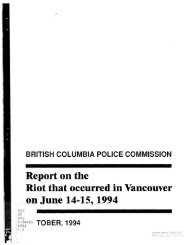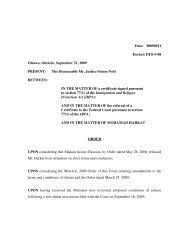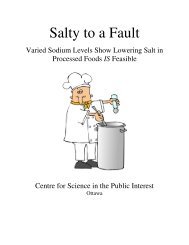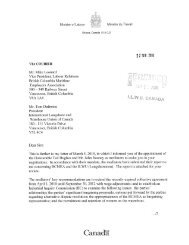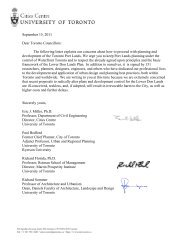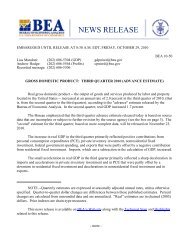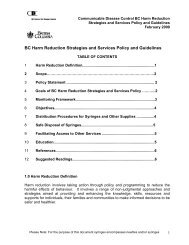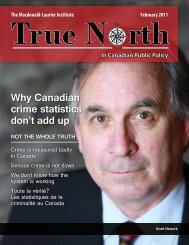Basic Points - The Globe and Mail
Basic Points - The Globe and Mail
Basic Points - The Globe and Mail
You also want an ePaper? Increase the reach of your titles
YUMPU automatically turns print PDFs into web optimized ePapers that Google loves.
<strong>The</strong> ObamaMama Bear Market?<br />
In the US, the 1981-82 Mama Bear market, the product of 18% interest rates,<br />
nearly killed the Reagan Recovery. Fortunately, Paul Volcker finally started cutting<br />
rates in August 1982, <strong>and</strong> the Reagan Revolution followed.<br />
...an appropriate<br />
stimulus package:<br />
it would be<br />
“timely, targeted<br />
<strong>and</strong> temporary.”<br />
Mr. Obama has been denying that he has revolutionary intent, claiming that he’s<br />
just fulfilling his election pledges. <strong>The</strong> spending emphasis is directed toward three<br />
over-arching goals—fighting global warming, improvement of public education,<br />
<strong>and</strong> achieving a form of universal health care. Although each of these goals offers<br />
attractions, what most investors had expected was that Mr. Obama would take<br />
some months—or even years—to craft the requisite legislative changes <strong>and</strong> submit<br />
them to Congress, within evolving budget constraints—after first dealing with the<br />
financial <strong>and</strong> economic forest fire that threatened to spread out of control.<br />
<strong>The</strong> brilliant Larry Summers had, on several occasions during the election<br />
campaign <strong>and</strong> after he became Economic Advisor to Obama, summed up an<br />
appropriate stimulus package: it would be “timely, targeted <strong>and</strong> temporary.”<br />
Investors assumed that meant Obama’s plan would focus on near-term job creation,<br />
with heavy emphasis on “shovel-ready” infrastructure programs that would, like<br />
Eisenhower’s Interstate Highway Program, stimulate the economy <strong>and</strong> open new<br />
areas for economic development.<br />
What we got does in fact include money for roads, bridges <strong>and</strong> other job-creators—<br />
roughly 5% of the total.<br />
As for the rest, Nancy Pelosi <strong>and</strong> her House colleagues gave the nation an<br />
encyclopedia-sized monstrosity with spending programs budgeted at nearly $800<br />
billion. No Republicans voted for it, their resistance stiffened by rebellion from<br />
Republican <strong>and</strong> moderate voters expressing horror at “runaway spending.”<br />
According to various nonpartisan analysts, $290 billion or more of the spending<br />
will not come before 2011. So much for the savior’s stimulus now.<br />
What stunned many observers who had awaited this initiative so eagerly was that,<br />
in the guise of temporary stimulus, the President was launching a revolution—<br />
Change We Could Fear—that would permanently alter the respective shares of<br />
GDP between the private sector <strong>and</strong> Washington. What is the model for this new<br />
America? It’s beginning to look a lot like Belgium.<br />
In comparing this multi-trillion gallimaufry of expenditures <strong>and</strong> regulations to<br />
reshape the American economy with Larry Summers’ previous promise that the<br />
stimulus program would be “targeted <strong>and</strong> temporary,” we thought of Dick Cheney’s<br />
<strong>and</strong> Donald Rumsfeld’s promise to a wary America, based on the CIA’s “slam<br />
dunk” assessment of Saddam’s WMD, that the war would be short <strong>and</strong> successful.<br />
4 March<br />
THE COXE STRATEGY JOURNAL



